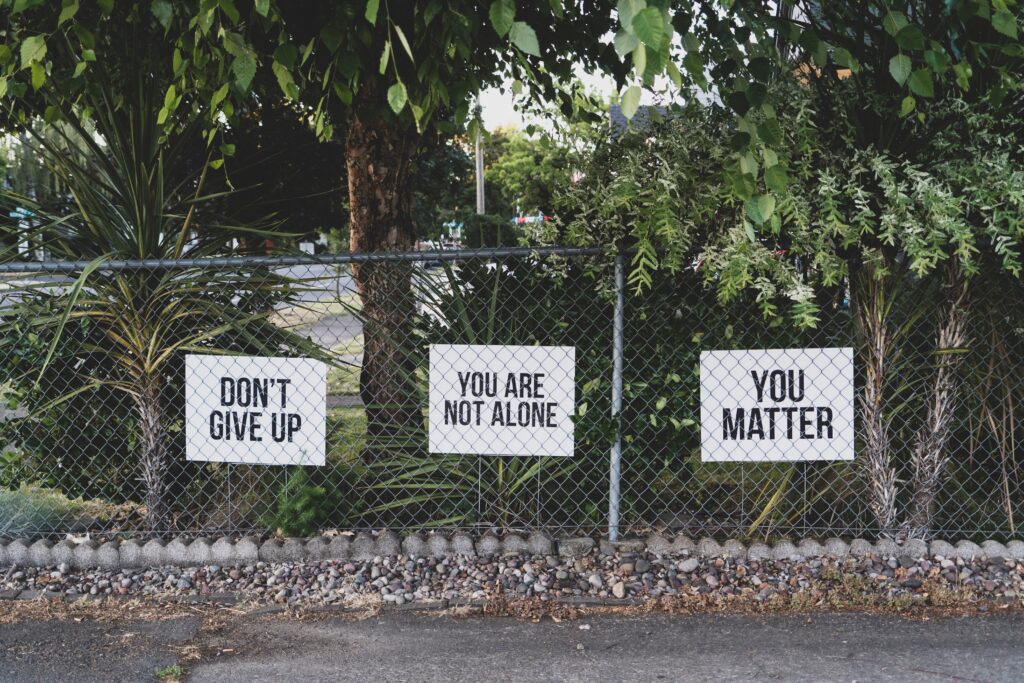May is Mental Health Awareness Month in America. And while the month is coming to a close, the advocacy for mental health awareness should not. For a May tradition that has been taking place since 1949, you sure don’t hear much about it, especially outside the mental health circle. So what is Mental Health Awareness Month, and what exactly does it entail?
What is Mental Health Awareness Month?
Mental Health Awareness Month is observed in May every year in the United States, running 74 years strong. The main goal is to raise awareness about the importance of mental health, combat the stigma associated with mental health issues, and advocate for policies that support mental health services. During this month, various activities are carried out nationwide, including educational events, community gatherings, mental health screenings, and sharing of personal stories. Online campaigns also play a significant role, with individuals and organizations sharing resources and support on social media platforms to reach wider audiences. It’s a collective effort to shed light on mental health and work towards a future where everyone feels comfortable seeking help when they need it. While more funds are being directed toward mental health initiatives, I can’t help but think this is just another industry that will eventually be tainted by corporate greed, a conversation for a different day.
Breaking the Stigma of Mental Health
When I first heard of May being Mental Health Awareness month, my first question was naturally – Why don’t we just make it Mental Health Awareness year, where everyone strives to be aware of being a human on a daily basis. But no, that wouldn’t be right because if you have mental health issues or even talk about mental health, that makes you an outsider to the status quo, right? Luckily, to anyone with any degree of decency, perception, and worldliness, it does not, and the push for widespread advocacy of Mental Health awareness is only improving that outlook overall.
If you are fortunate enough to be one of the many people that live in a community or region where mental health issues are approached from a supportive reach, then you are lucky. Many Americans still live in areas where Mental Health is stigmatized, so people are afraid to talk about anything they may be struggling with. I can’t imagine living in a place where I’m afraid to be seen walking into or out of rehab or a therapist’s office out of fear of being alienated from coworkers, friends, and even family. That is, of course, not the majority, and fortunately, we are seeing more normalization of mental health outreach. Living in an area with limited Mental Health resources can make taking that first step of searching online for available mental health services near you feel intimidating. If you are on the fence or struggling with reaching out to a provider, try to think of it from a different perspective – Many people who sought help were in your shoes because they were curious enough about what lay on the other side of change.
Mental Health Awareness: It’s About All of Us
But before we delve into it, it’s worth setting the record straight. Mental health is not just about mental illness. It’s also about mental wellness, resilience, and living a balanced and fulfilling life. It’s about recognizing our emotions, managing stress, forming connections with others, and generally living our best lives, whatever that means to each of us. For many people, this stuff takes time, like decades. We all have mental health, just as we all have physical health. It’s not an us versus them issue. It’s an ‘all of us’ issue.
According to the National Alliance on Mental Illness (NAMI), approximately 1 in 5 adults in the U.S. — that’s 46.6 million people — experience mental illness in a given year1. That’s your sister, your coworker, your neighbor, and maybe even you. And yet, only 43.3% of adults with mental illness received treatment in 20182. That’s less than half, my friends! So, we’ve got some work to do, the key word being we.
To move toward better mental health, it’s vital to break down the walls of silence and create safe spaces for open conversations. For many of us, this can start with our own social circles. As an individual, you have the power to normalize discussions about mental health by being open about your own experiences, listening to others when they share theirs, and challenging the misconceptions when they arise. It doesn’t have to be a grand gesture, even small conversations can lead to significant change.
Support and Resources During Mental Health Awareness Month
But what about if you’re feeling the weight of a mental health condition? You’re not alone, and help is available. Start by contacting your primary care physician, who can guide you to appropriate resources and potential treatments. If you’re hesitant about stepping into an office, teletherapy options have also expanded in recent years, providing a flexible and often less intimidating way to start your mental health journey. An easy starting point is our free, comprehensive mental health directory of providers and rehab treatment centers near you.
For Mental Health Awareness Month, let’s challenge ourselves to keep the conversation going in May and every day of the year. It’s time to drop the shame, work to end the stigma, and treat mental health with the same gravity we give physical health.
Ultimately, it’s about fostering understanding, empathy, and compassion for all people (including yourself), irrespective of what they may be going through. And the best part? When we take care of our mental health, and when we’re open and supportive about mental health issues in our communities, we’re not only helping ourselves, we’re helping each other. And that, my friends, is a beautiful thing.
Sources:
1National Alliance on Mental Illness. Mental Health By The Numbers. Accessed on May 24, 2023, from https://www.nami.org/mhstats
2Substance Abuse and Mental Health Services Administration. 2018 National Survey on Drug Use and Health. Accessed on May 24, 2023, from https://www.samhsa.gov/data/sites/default/files/cbhsq-reports







